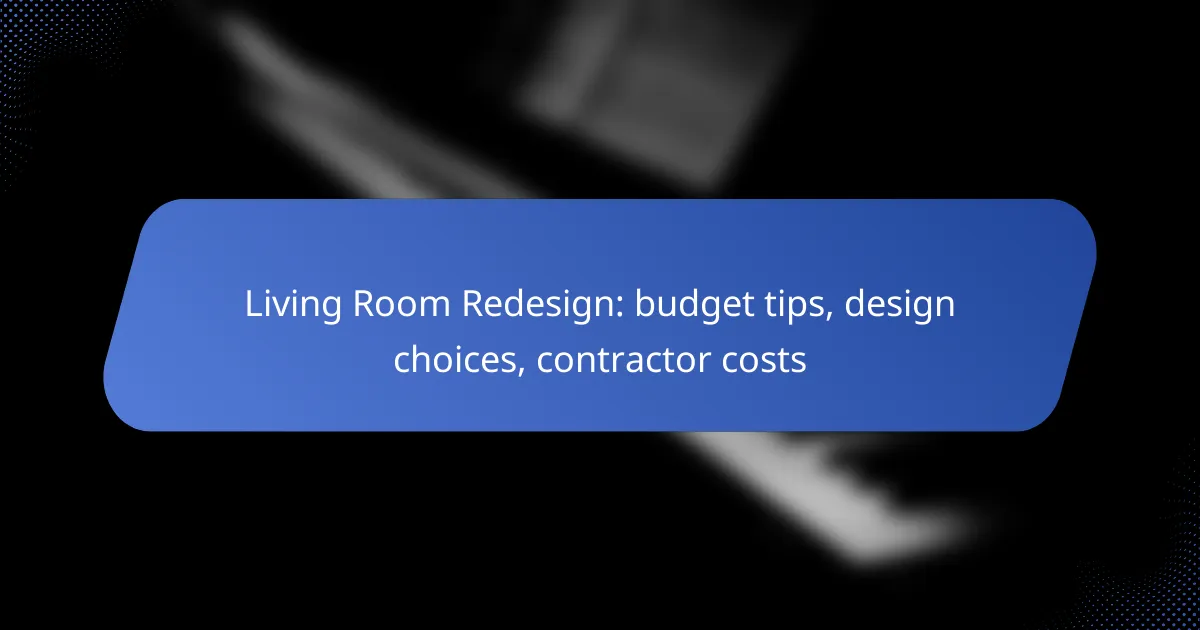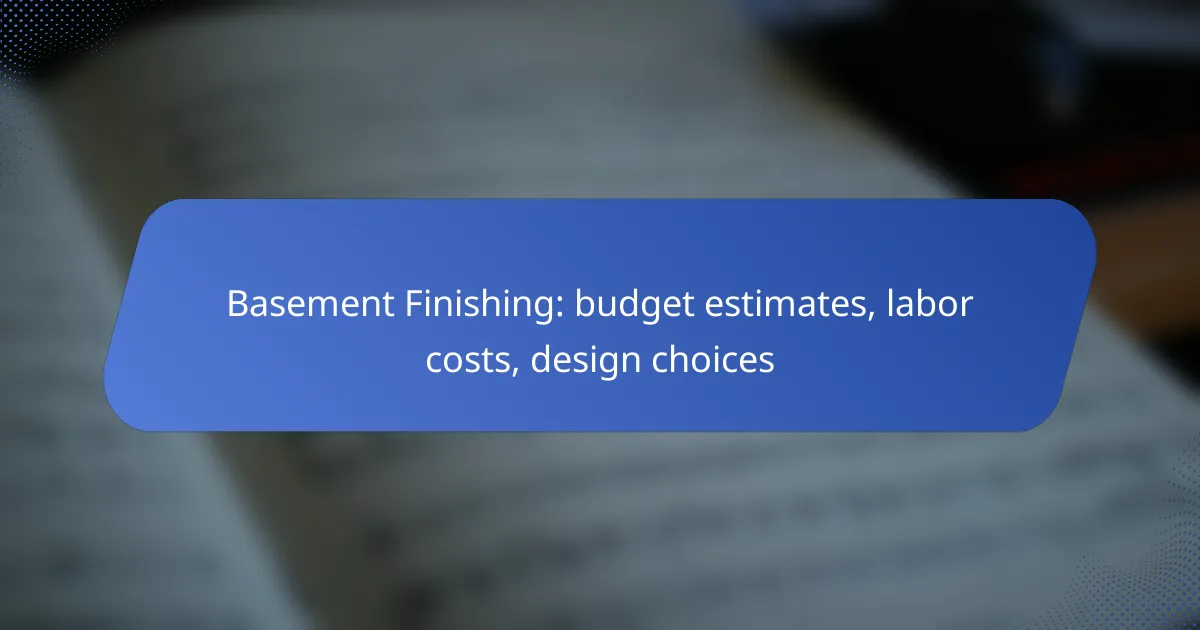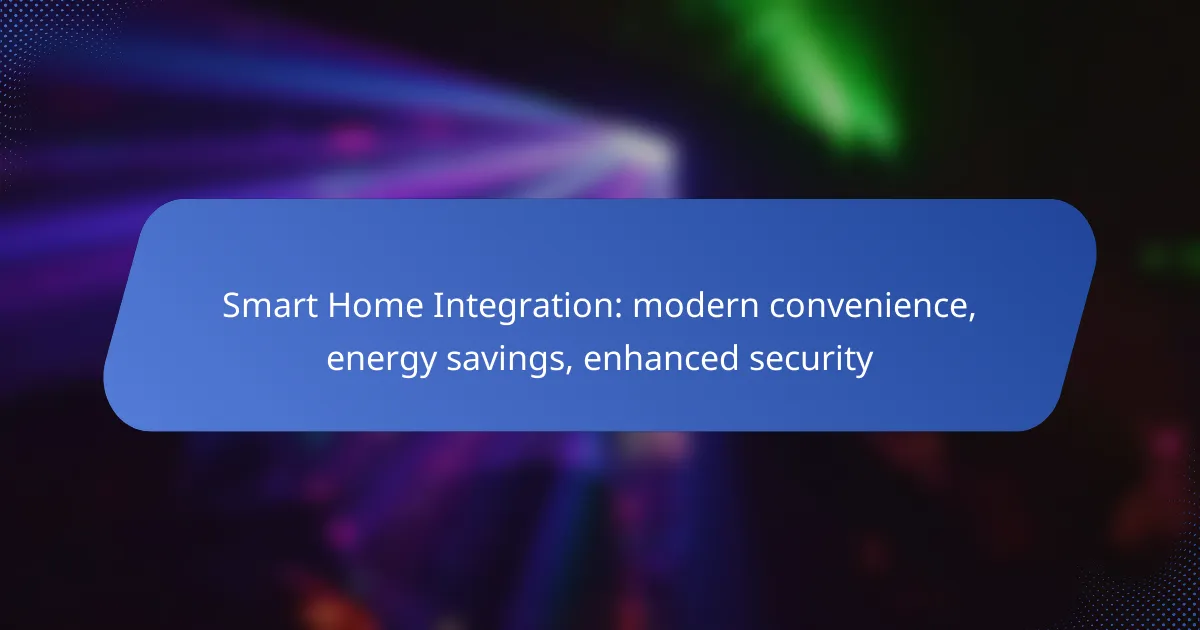When considering window replacement, homeowners should be aware that costs can vary widely based on factors such as window type, materials, and installation complexity. Investing in new windows not only enhances the aesthetic appeal of a home but also improves energy efficiency, leading to significant savings on heating and cooling bills. Understanding these pricing factors can help homeowners make informed decisions and effectively budget for their window replacement projects.
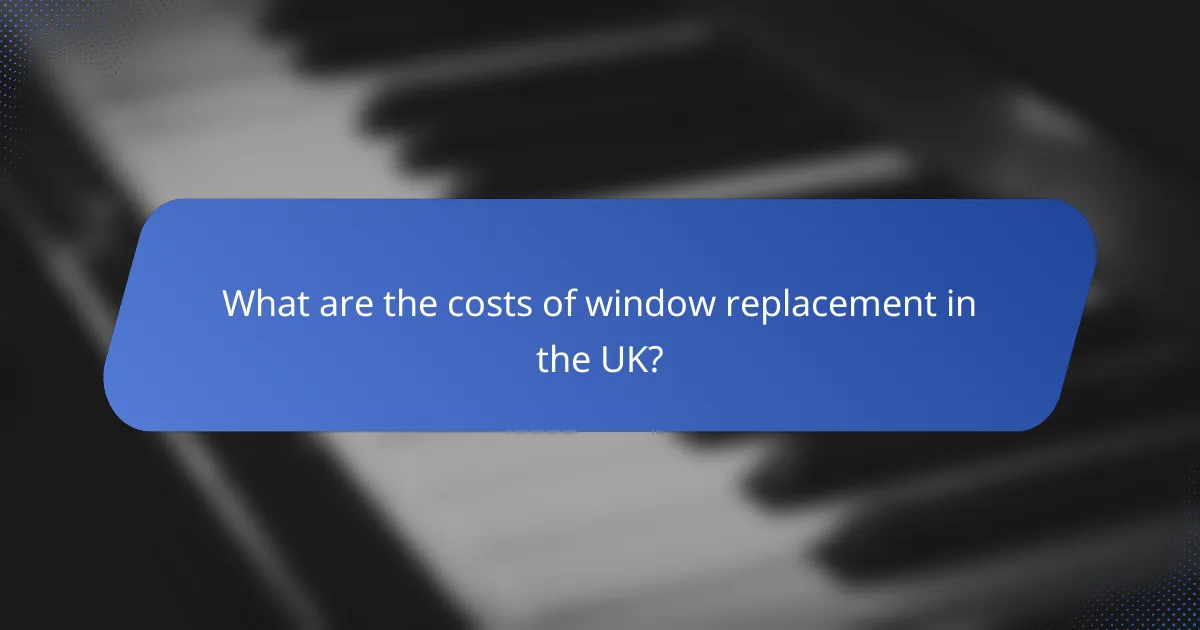
What are the costs of window replacement in the UK?
The costs of window replacement in the UK can vary significantly based on several factors, including the type of windows, materials used, and installation complexity. Homeowners can expect to pay anywhere from a few hundred to several thousand pounds depending on their specific needs and choices.
Average installation costs
On average, the installation costs for replacing windows in the UK range from £300 to £1,000 per window. This price typically includes both the cost of the window itself and the labor required for installation. Larger or more complex windows, such as bay or sash styles, may incur higher costs.
For a standard three-bedroom home, total window replacement costs can fall between £3,000 and £10,000, depending on the number of windows and the materials selected. It’s advisable to obtain multiple quotes from contractors to ensure competitive pricing.
Cost factors affecting pricing
Several factors influence the pricing of window replacement, including the type of window frame material (uPVC, wood, or aluminum), the glazing options (single, double, or triple glazing), and any additional features like energy efficiency ratings or security enhancements. Each of these elements can significantly impact both the initial cost and long-term savings.
Installation complexity also plays a role; for instance, replacing windows in older homes with non-standard sizes or structural challenges may require more labor and time, increasing overall costs. Homeowners should consider these factors when budgeting for window replacement to avoid unexpected expenses.
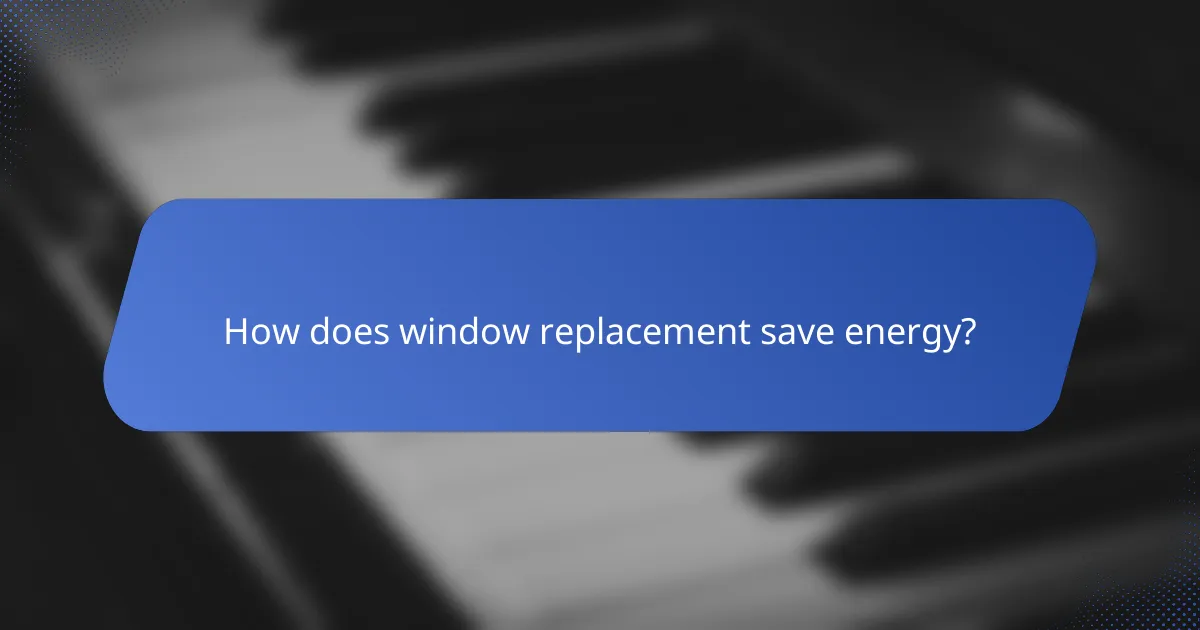
How does window replacement save energy?
Window replacement saves energy by enhancing insulation and reducing heat transfer. Newer windows are designed to minimize air leaks and improve thermal performance, leading to lower heating and cooling costs.
Energy-efficient window options
When considering energy-efficient windows, look for options with double or triple glazing, low-emissivity (Low-E) coatings, and gas fills like argon or krypton. These features significantly reduce heat loss in winter and heat gain in summer.
Additionally, consider the frame materials. Vinyl and fiberglass frames typically offer better insulation compared to aluminum. Ensure the windows meet local energy efficiency standards, such as ENERGY STAR ratings, which can vary by region.
Long-term savings on energy bills
Investing in energy-efficient windows can lead to substantial long-term savings on energy bills. Homeowners often see reductions in heating and cooling costs ranging from 10% to 25% after replacing old windows.
While the initial investment may be higher, the return on investment can be realized within a few years through lower utility bills. Additionally, many regions offer rebates or tax incentives for energy-efficient upgrades, further enhancing savings.

What factors influence window replacement pricing?
Several factors affect window replacement pricing, including the materials used, installation complexity, and local labor costs. Understanding these elements can help homeowners make informed decisions and budget effectively for their projects.
Window materials and their costs
The choice of window materials significantly impacts overall pricing. Common options include vinyl, wood, aluminum, and fiberglass, each with varying costs. For instance, vinyl windows typically range from $300 to $700 per window, while wood windows can cost between $800 and $1,500.
Additionally, energy-efficient options, such as double or triple-pane glass, may have higher upfront costs but can lead to long-term savings on energy bills. It’s essential to weigh the initial investment against potential energy savings when selecting materials.
Installation complexity and labor costs
Installation complexity can greatly influence labor costs, which typically range from $100 to $300 per window. Factors like window size, shape, and the condition of existing frames can complicate installation, leading to higher labor expenses. For example, custom-sized windows or those requiring structural modifications will incur additional costs.
Homeowners should also consider the experience level of the installer. Hiring a licensed professional may cost more upfront but can ensure proper installation and compliance with local building codes, ultimately saving money on future repairs or replacements.
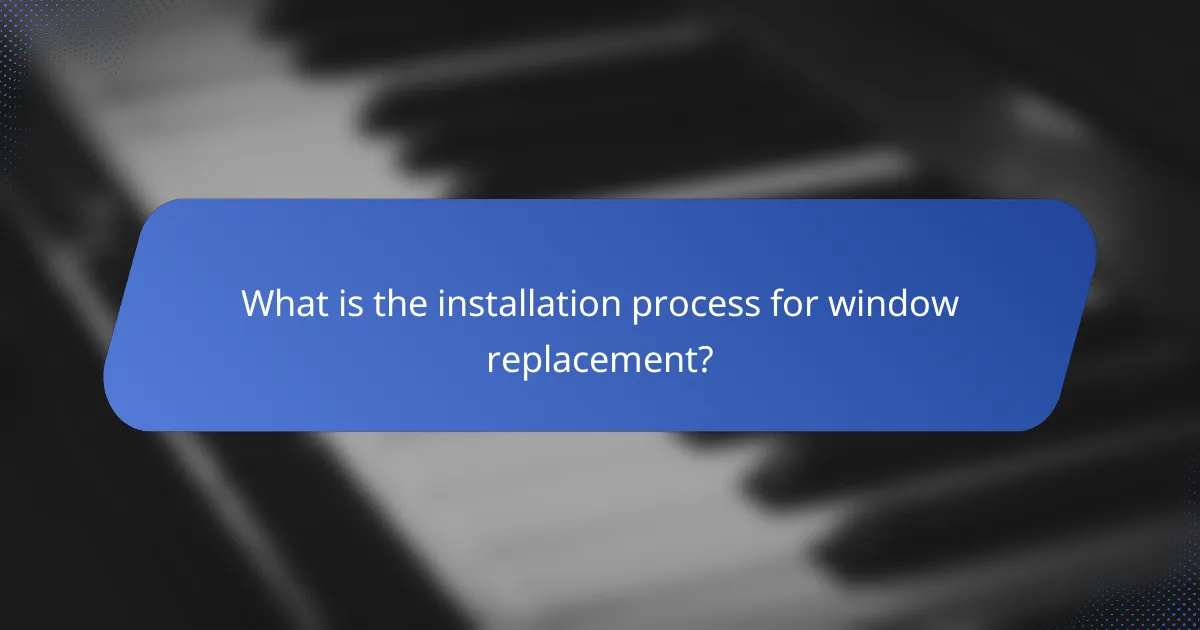
What is the installation process for window replacement?
The installation process for window replacement involves several key steps to ensure proper fitting and functionality. It typically includes measuring, removing old windows, preparing the opening, and installing new windows with appropriate sealing and insulation.
Steps in the installation process
The first step in window replacement is to measure the existing window openings accurately. This ensures that the new windows fit properly. Next, the old windows are carefully removed, taking care not to damage surrounding structures.
Once the old windows are out, the opening is prepared by cleaning and repairing any damage. New windows are then installed, ensuring they are level and square. Finally, proper sealing and insulation are applied to prevent drafts and moisture intrusion.
Timeframe for installation
The timeframe for window replacement can vary based on the number of windows being replaced and the complexity of the installation. Generally, replacing a single window may take a few hours, while a whole-house replacement could span several days.
Factors influencing the timeframe include weather conditions, the type of windows being installed, and whether any structural modifications are needed. Planning ahead and scheduling with a professional can help streamline the process and minimize disruptions.

What are the benefits of energy-efficient windows?
Energy-efficient windows offer significant advantages, including reduced energy costs and enhanced comfort in your home. By minimizing heat transfer, these windows help maintain a consistent indoor temperature, leading to lower heating and cooling expenses.
Improved insulation properties
Energy-efficient windows are designed with advanced insulation features, such as double or triple glazing, low-emissivity (Low-E) coatings, and gas fills like argon or krypton. These elements work together to reduce heat loss in winter and keep heat out in summer, improving overall home insulation.
When selecting windows, look for those with a high R-value, which indicates better insulation performance. This can result in energy savings of 10-25% on heating and cooling bills, depending on your local climate and existing window conditions.
Environmental impact reduction
By using less energy for heating and cooling, energy-efficient windows contribute to a decrease in greenhouse gas emissions. This is particularly relevant in regions where electricity is generated from fossil fuels, as reducing energy consumption directly lowers carbon footprints.
Additionally, many energy-efficient windows are made from sustainable materials and can be recycled at the end of their life cycle. Choosing these windows not only benefits your wallet but also supports broader environmental goals, making it a responsible choice for homeowners.

How do local regulations affect window replacement?
Local regulations significantly impact window replacement by enforcing specific building codes and permitting processes. These regulations ensure safety, energy efficiency, and compliance with community standards, which can influence both the cost and timeline of your project.
Building codes in the UK
In the UK, building codes dictate the standards for window installation, focusing on safety, energy efficiency, and structural integrity. Compliance with the Building Regulations is mandatory, which includes requirements for thermal performance and ventilation. For instance, new windows must meet specific U-values to ensure adequate insulation.
Homeowners should consult the latest version of the Building Regulations and consider hiring a qualified installer familiar with these codes. Non-compliance can lead to fines or the need for costly rework.
Permits required for installation
In many areas of the UK, obtaining a permit is necessary before replacing windows, especially if the property is listed or located in a conservation area. The application process typically involves submitting detailed plans and specifications to the local council.
It’s advisable to check with your local authority about the specific permit requirements and timelines. Failing to secure the proper permits can result in penalties and may complicate future property transactions.

What are the emerging trends in window technology?
Emerging trends in window technology focus on enhancing energy efficiency, convenience, and sustainability. Innovations like smart windows and automation are becoming increasingly popular, offering homeowners advanced control over their living environments.
Smart windows and automation
Smart windows utilize advanced materials and technologies to adjust their properties in response to environmental conditions. These windows can change tint, block UV rays, or even regulate temperature, leading to significant energy savings.
Automation in window technology often integrates with home management systems. This allows users to control window settings remotely or set schedules for optimal energy efficiency, contributing to lower utility bills.
When considering smart windows, evaluate the initial investment against potential long-term savings. While prices can vary widely, expect to pay more upfront compared to traditional windows, but the energy savings over time may justify the cost. Look for products that meet local energy efficiency standards to ensure compliance and maximize benefits.







